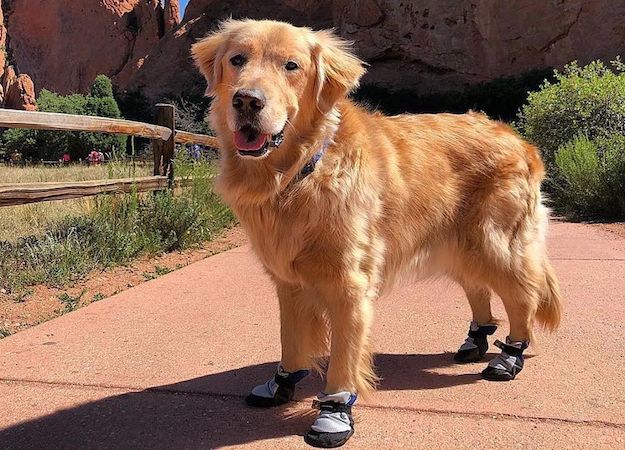
You bathe your dog, trim his nails, take him to the vet, carefully choose the right food and toys for him, and make sure he wears a doggie seatbelt when traveling. In fact, you do everything you can to keep your furkid safe and healthy. But if you’re like most pet parents, you may be overlooking something important – his paws.
“People do not think to protect their pets' paws because it is not in the standard list of pet needs,” says Cindy Magiera, owner and CEO of Saltsox, a manufacturer of protective pet booties. “Food, shelter, toys, treats, et cetera are all on the top of people's minds. People think that a dog's paws are resilient and tough, which they are, but they can get hurt too.”
A dog’s paws are naturally equipped to handle different terrain and temperatures. Unlike people, who only have a layer of skin on the bottoms of their feet, dogs have paw pads, which are thick, well-insulated, and tougher than any other part of their bodies.
However, these pads have limitations. They can blister and burn in extreme weather conditions, they can be damaged by rough terrain or sharp objects, and they can be irritated by allergens and chemicals.
There are ways to protect your pets’ paws and keep them safe.
Walk Smart
Dogs can handle short bouts of playing or walking through snow, especially cold-weather breeds and dogs that are used to cold climates. However, it’s best to limit the length of walks on icy, snowy streets and sidewalks, especially in cities, where salt or other chemicals have likely been applied.
Hot weather can be dangerous for pet paws as well. Pavement heats more quickly than air – in fact, it can be more than 40 degrees higher than the air temperatures. Skin can burn at temperatures above 130 degrees after just sixty seconds, so the risk of your pooch’s paw pads burning in 80 or 90, or 100-degree weather is very real. In hot weather, opt for cooler morning and evening walks, walk on grass or soil when possible, and exercise dogs on grassy terrain or indoors.
Use Protective Booties
An ounce of prevention is worth a pound of cure, as they say. Pet booties can help protect your pet’s paws from heat and cold and keep them safe from abrasive terrain and irritants.
Not all booties are made the same, and it’s important to seek out quality options. We like Saltsox booties for a number of reasons. First, they have two versions: Lavasox for hot weather, which feature a radiant heat barrier, and Saltsox for cold weather, which have fleece lining for warmth. Both versions are water resistant and have thin soles that grip the ground for a natural feel.
Give Pet Paws TLC
Make your pet’s paws a regular part of your pet care routine. If your pooch has walked through snow, ice, sand, or irritants like fertilizers or cleaners, thoroughly wipe his paws. Make sure to clean the area between his toes, where his skin is less protected and more delicate and sensitive.
Untreated paw injuries are painful and can lead to something more serious. After walks in extreme weather or over rough terrain, check your pooch’s paws for abrasions, redness, or swelling.
“People don’t realize that paw pads can become injured by salt, heat and pretty much anything on the ground, especially in the city,” says Cindy. “You really do want to do anything you can to save your dog unnecessary pain.”
In short, paw health is of real concern for pet parents. But a little awareness and a little extra loving care can go a long way toward keeping your pooch’s feet happy, healthy, and ready for wherever his next adventure will take him!
Photo Credit: Saltsox